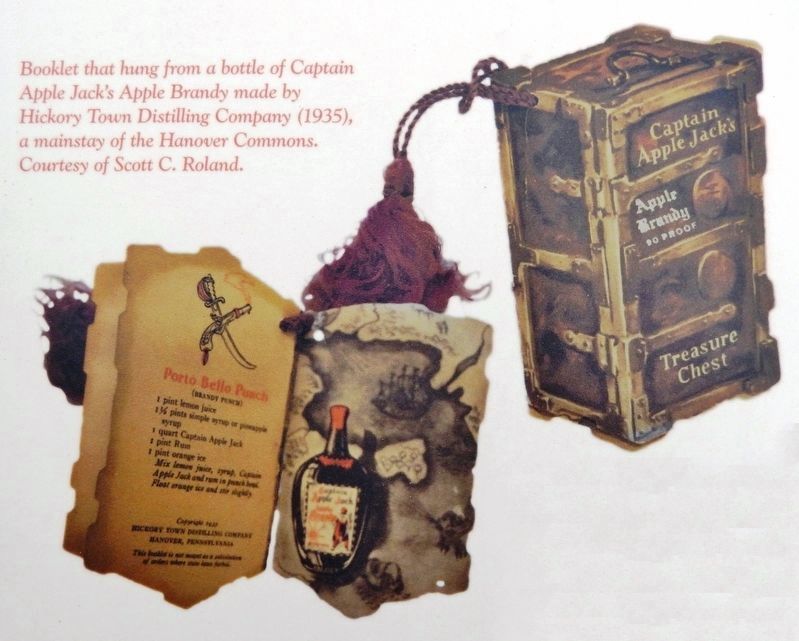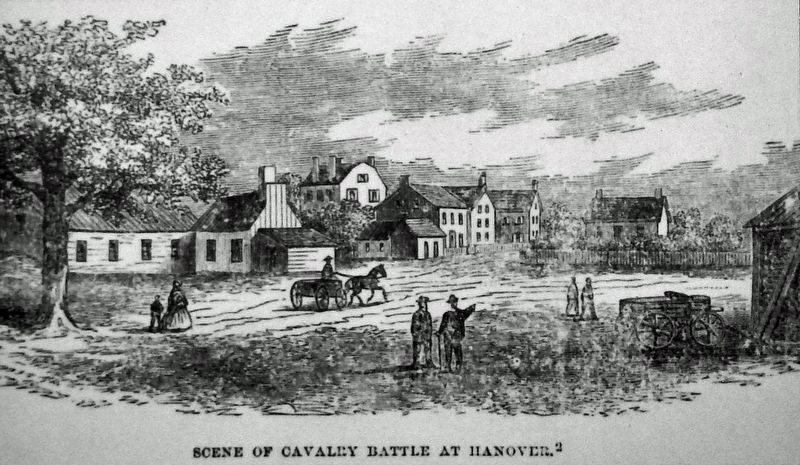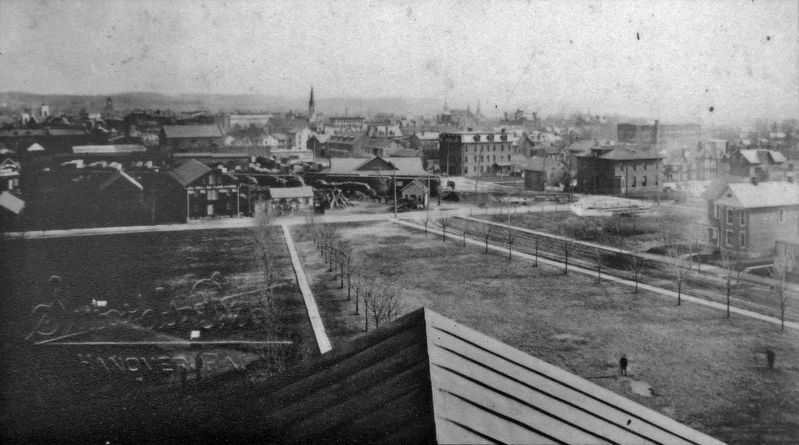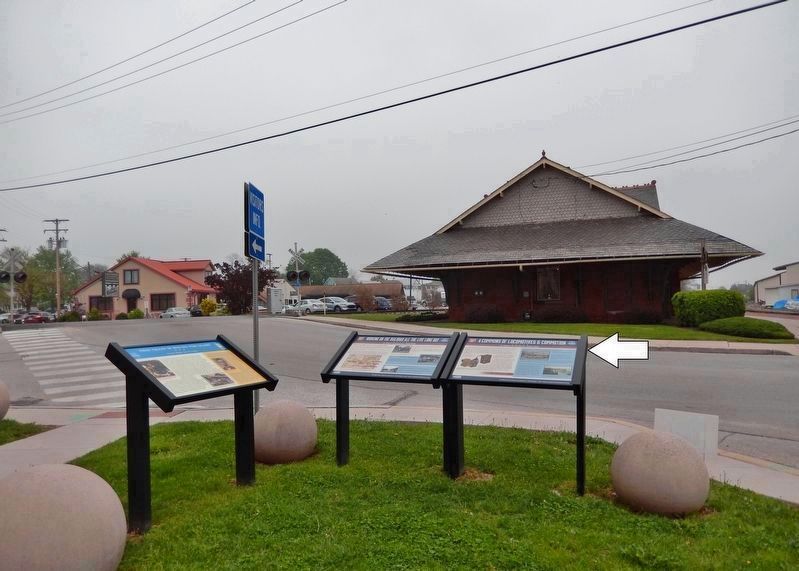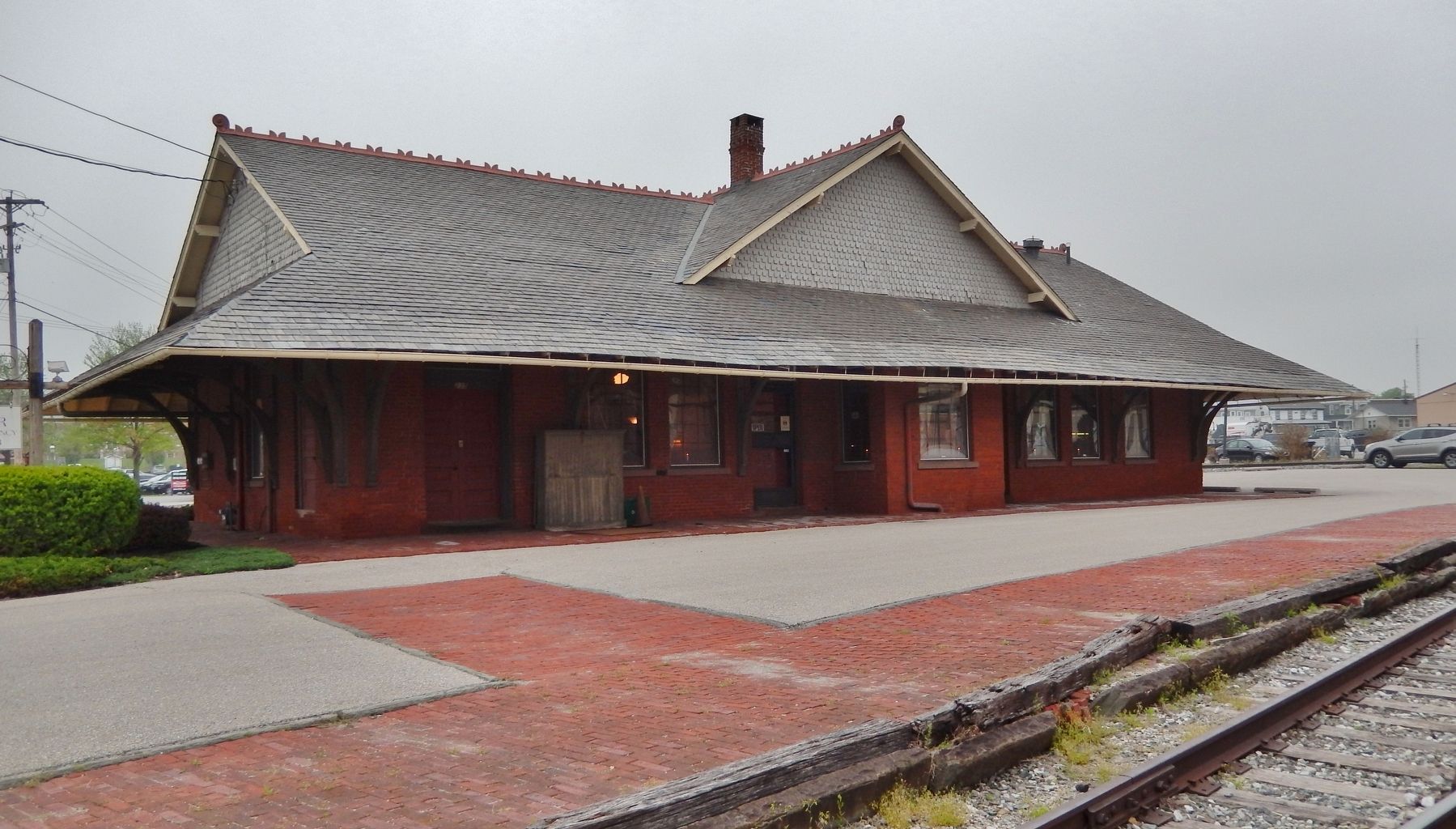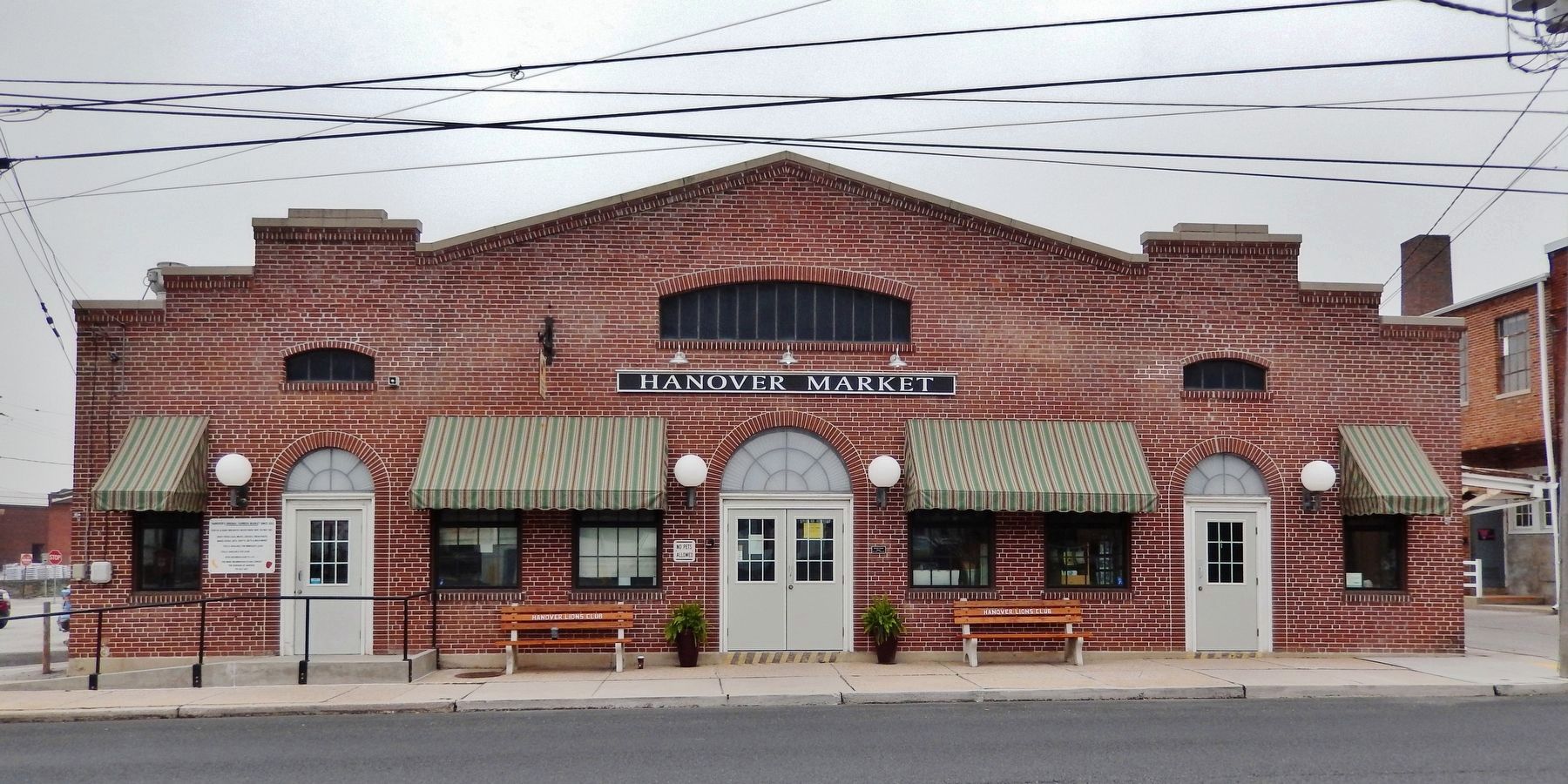Hanover in York County, Pennsylvania — The American Northeast (Mid-Atlantic)
A Commons of Locomotives & Locomotion
A Heart of Hanover Trail Stop
Aided and empowered by the opening of railroad tracks and the Hanover depot in 1852, the Hanover Commons reached peak industrial activity from the late 19th century well into the 20th, when the following businesses hummed and ticked: Hanover Train Car Company, J.S. Young enterprises (a tree bark-to-fabric dye maker, feed mill, produce warehouse, and Hickory Town Distilling Company), Schmuck coal and lumber company, Fitz's foundry and waterwheel manufacturing, Conrad Moul iron foundry and saw mill, Brodbeck's tannery, Cordage hemp factory, a shirt manufacturer, a maker of matches, Hoke Bair cattle yard, Zehring's buggy and farm equipment store, Crouse's planing mill, a firehouse, and Hanover's market house (built in 1932-1933 and still open).
During this period, the Commons was an industrial park of sorts that helped build this town and fuel the Industrial Revolution in the United States.
Imagine the beehive of activity before you of sights, shouts, and smells. Imagine the pounding of steel and iron; the sawing of wood; the shoveling of coal; the screeches of rail wheels on curved tracks; the heaving of steam engines; the wailing of train whistles; the sizzle of water on burning coal; the splash of hemp into vats of cod liver oil; black clouds billowing from smokestacks; the smells of tannin, hot iron and burnt coal commingling in the air; and the clip-clopping and neighing of horses drawing carriages of lumber, coal, fabric dyes, and spirits. All were testaments to Hanover's creative pride and longstanding work ethic, whose hands-on, can-do, self-reliant spirit helped build a community and thrives to this day.
A Commons for the People: The Beginning in the 1790s
From where you are standing, you are looking into the heart of the 18-acre Hanover Commons. The donations of 100 citizens purchased this land from the estate of town founder Richard McAllister (1725-1795) for public use. Initially, the Commons provided pastureland for all and open space for the militia to train.
Over time, business interests began squatting there. That led to confusion and litigation as to who owned what. After the legal dust settled, it was determined that the Borough of Hanover owned the land. Afterwards, many businesses owned the buildings therein while paying land leases of varying durations.
Freedom Train from the Commons: 1855
In 1855, three enslaved individuals from Maryland purchased tickets for passage from Hanover to York on the Hanover Branch Railroad and Northern Central Railway. Mr. Scholl of Maryland, the owner of one of the freedom seekers, sued the Northern Central Railway Company to recover the value of whom he deemed to be his "property,"
claiming the railway company knowingly assisted in the loss of his property. Citing the federal Fugitive Slave Act, a Maryland court ruled in favor of Scholl, granting him $813.40 in damages and costs. It is not known how far the escapees traveled on the railroad, as they were not seen again after boarding their train to freedom in Hanover.
Erected 2022 by Main Street Hanover; and Heart of Hanover Trails.
Topics. This historical marker is listed in these topic lists: Abolition & Underground RR • African Americans • Industry & Commerce • Railroads & Streetcars. A significant historical year for this entry is 1852.
Location. 39° 48.251′ N, 76° 59.163′ W. Marker is in Hanover, Pennsylvania, in York County. Marker is at the intersection of North Railroad Street and Library Place, on the right when traveling south on North Railroad Street. Marker is located near the southeast corner of the Guthrie Memorial Library. Touch for map. Marker is at or near this postal address: 2 Library Place, Hanover PA 17331, United States of America. Touch for directions.
Other nearby markers. At least 8 other markers are within walking distance of this marker. Working on the Railroad All the Live Long Day (here, next to this marker); This Train is Bound for Glory (here, next to this marker); In Memory and in Grateful Recognition of (within shouting distance of this marker); Destruction of Private Property
(about 300 feet away, measured in a direct line); Abraham Lincoln (about 400 feet away); a different marker also named Abraham Lincoln (about 500 feet away); Korean War Memorial (about 500 feet away); Vietnam War Memorial (about 500 feet away). Touch for a list and map of all markers in Hanover.
Related markers. Click here for a list of markers that are related to this marker. Heart of Hanover Trail
Also see . . . Fugitive Slave Acts.
The Fugitive Slave Acts were a pair of federal laws that allowed for the capture and return of runaway enslaved people within the territory of the United States. Enacted by Congress in 1793, the first Fugitive Slave Act authorized local governments to seize and return escapees to their owners and imposed penalties on anyone who aided in their flight. Widespread resistance to the 1793 law led to the passage of the Fugitive Slave Act of 1850, which added more provisions regarding runaways and levied even harsher punishments for interfering in their capture.(Submitted on May 5, 2022, by Cosmos Mariner of Cape Canaveral, Florida.)
Credits. This page was last revised on May 8, 2022. It was originally submitted on May 3, 2022, by Cosmos Mariner of Cape Canaveral, Florida. This page has been viewed 175 times since then and 23 times this year. Photos: 1, 2, 3, 4, 5, 6. submitted on May 5, 2022, by Cosmos Mariner of Cape Canaveral, Florida. 7. submitted on May 6, 2022, by Cosmos Mariner of Cape Canaveral, Florida.

